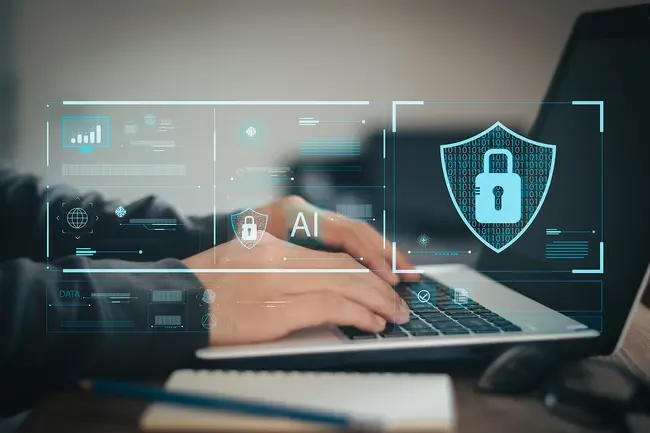Leyton Jefferies, Head of Cyber Security Services at CSI Ltd (www.csiltd.co.uk)

Threat detection is harder today than it was two years ago. Next year will be harder than this year. Why? It’s a compounding effect from skills shortages and threat varieties that’s making it more challenging for any one product to handle key security wins. And cyber security is a constantly evolving sector with 2022 a devastating year for cyber security. Both hackers and security experts are always in a battle to outsmart each other.
Even for businesses with good IT departments, data protection can too quickly become an afterthought. Today’s threat landscape is growing, not just in the frequency of attacks (and the number of high-profile breaches recorded in the media) but so is the complexity of any given threat. A recent piece of research found that in 93 percent of cases, an external attacker can breach an organisation's network perimeter and gain access to local network resources. Following increasing levels of cyber-attacks, it’s a case of “not if I will be hit by a ransomware attack,” but “when…” Organisations need to do something to mitigate the risk and protect their businesses, and they need to do it now.
Planning and executing a better defense to outsmart attackers and win more security battles doesn’t have to feel like a military operation – but it does require the right service coverage to remove blind spots and reduce emerging risks before they escalate.
Good cyber security at the core of everything
As security threats increase and organisations embrace cloud and SaaS any managed service provider should be supporting and empowering their clients to stay competitive, underpinning their digital transformation with security at the core of everything they do. As businesses accelerate to digital adoption and people play out their lives online, threat actors are ready to capitalise on the transitional moment.
As we see rapid technological change – think driverless cars and home robots that manage our lives – so cyber-attacks will become more sophisticated. Where once we were concerned about ransomware on our laptops, soon we will worry about our cars being infected or our houses breached. But AI and machine learning (ML) will evolve to help us stay safe.
Automatic threat detection and response
Although in its infancy, there are already AI and ML tools that will help prevent, detect and respond to cyber security threats automatically. There is a need for businesses to be more proactive and stop the threats before they happen which these tools help to do. Businesses should be discussing with their service providers how these tools can be used to protect them and how automation can play a key role in keeping their systems safe.
In cyber security, the role of machine learning & AI is rapidly growing, and it’s becoming more predictive in nature. Security is becoming more specific to businesses and not reliant on historical attack data. Cyber security is no longer just a human-scale problem and a continuous AI loop and security ecosystem are essential.
Thanks to ML and computer-assisted security measures, (automated response) cyber security has also become more effective, and less expensive simultaneously. AI-enabled threat detection systems can predict new attacks and notify admins of data breaches instantly and before they happen.
These autonomous response tools make AI decisions in seconds. They take proportionate and targeted actions and react faster than human teams. This means the security provider identifies threats and alerts the managed service provider with actionable remediation guidance that they can apply on behalf of the organisation.
The result for the organisation is, instead of a phone call at 3am on a Saturday, they can come into the office on Monday and have a resolved incident response report in their inbox, allowing them to have confidence in their security and focus on other elements that drive their business’s growth. Previously, by the time you had come to work on Monday morning all the damage had been done. So, automation and 24/7 service have changed the threat landscape and made it possible to enforce normal business operations almost immediately when a threat is identified.
Is outsourcing right for you?
More and more of the security function is being outsourced. But how do you tell if this is the right approach for you? The security market is oversaturated with tools that enable solutions to security challenges. However, tools alone do not solve security challenges. In order to get better outcomes, you need to have skilled security personnel to manage the tools and have robust processes built and in place for how and when these tools are used.
This can be distilled into: people + process + technology = better outcomes.
It’s difficult to hire and retain the right security staff to fill the people and process gap. By outsourcing elements of security, you can rely on external expertise to augment your existing inhouse team and processes. It allows organisations who may be resource gapped (people, expertise and budget) or knowledge gapped (process and expertise) to reach better security outcomes which previously were exclusive to larger enterprises with large budgets and internal security operation centres.
By outsourcing elements of cyber security, with experts acting as an extension of your team, they can help make sense of the noise and deliver what’s important to you, and allow you and your organisation to focus on your business and its outcomes.
Future of Machine Learning and AI
This decade we will see an exponential rise in proactive measures driven through a combination of both ML & AI such as automated real-time, never off testing and vulnerability scanning being carried out by organisations more frequently and more proactively. Not only is it a part of good cyber hygiene, it is also essential to safeguard sensitive data against new cyber security threats.
Reputational damage from a cyber-attack can be devastating to a business, not forgetting the personal liability that it brings to the board. The costs of recovering and restoring a business from an attack are often vast and can result in businesses going under. That’s why automated Managed Detection and Response (MDR) tools with inbuilt AI and ML are so important. We’re just beginning to witness the true power of AI and how it will shape cyber security. It’s one of the top trends I’m excited to watch next year.
Cyber security trends for 2023
2023 will be important for cyber security for several major reasons. First, the world is slowly returning to a new normal following the post-covid era. But what the future of business and commerce will look like is still a mystery. Secondly, there has been a significant shift in the way the internet works and how connected we are. We are more reliant on technology than ever before, so safety and privacy will be at the forefront of anything we do online. Finally, internet literacy has increased and as a result there are going to be more sophisticated cyber-attacks than ever before. Governments and political parties understand the power of the internet to influence the masses and so to ensure it’s not exploited is a key ethical concern.
Talent shortages, tool complexity and threat varieties can confuse businesses when it comes to adopting new security technologies. But the comprehensive service coverage of managed detection and response (MDR) brings innovation and talent under one roof – helping businesses outsmart the hackers and win more security battles. And remember, it’s not ‘if’ but ‘when’ – every business is vulnerable when it comes to cyber security so prepare for the worse to prevent potentially catastrophic reputational damage.







Comments ( 1 )
Matt Harris
30/09/2022